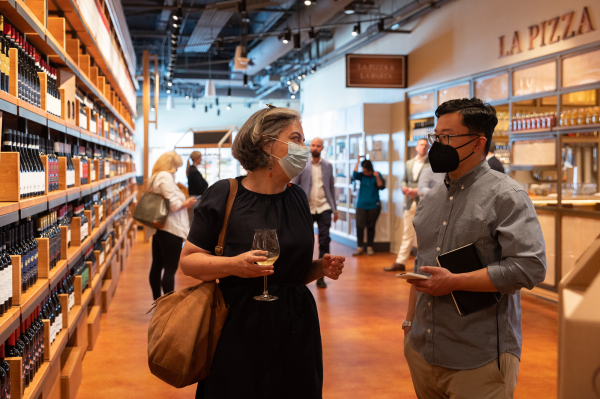
During my first assignment, chocolatier and former journalist Ursula Schnyder told me that reporting was a lot like cooking. "There's a lot of emotions," she said.
Honestly, this was the last thing I wanted to hear. I started writing to escape the frenetic pace and pressures of kitchens.
The greatest moments I had while working as a cook are still the most thrilling highlights of my professional life — seeing a team of misfits churn out beautiful food and marking the end of a Saturday night shift deliriously (and slightly drunkenly) dancing to cumbia.
But sleepless nights fueled by adrenaline and anxiety quickly wore me out. I didn't know how to ask for help and quit the industry after about a year.
I still had a passion for food and sought the satisfaction of serving carefully crafted dishes, but I had no idea what to do next until I started writing — first on my blog, then as a freelancer and here at the Foodist.
I discovered that writing entails creating a tangible product. Our articles attract readers' eyes in the same way that golden polenta biscuits demand diners' attention. And it's remarkable that our work can fill a restaurant's dining room with curious customers.

The flow of the newsroom also resembles the camaraderie and teamwork found in the kitchen. In our open floor plan office, editors and designers throw around questions about inches and layouts in conversations that evoke a cook flipping a steak coordinating with a peer who's tweezer-plating a salad. Both environments foster a healthy dose of cynicism and snark, too. At the end of the day, we pull together stories about malodorous flowers and circus performers into cohesive packages that resemble tasting menus consisting of seemingly incongruous courses.
Unfortunately, these two industries also face similar challenges. "Labor shortage" is the biggest buzzword in restaurant coverage, and local newsrooms keep shrinking.
I used to write seemingly endless prep lists in Sharpie, with romanesco to be shaved and lemons to be zested before 5 p.m. Here, I race from interviewing one of the world's only antique slot machine repairmen for The Six Fifty to assembling "Edible Intel" and "What I'm Eating" in time for the scheduled newsletter send. Head chefs jump in as dishwashers and bakers, and editors cover for staff writing obituaries and sports stories.
When I went to work as a line cook shortly after graduating from college, the support I received was surprisingly overwhelming. I frequently heard the phrase, "Go chase your dream!" The romantic ideals associated with cooking — creativity and artistry — were supposed to make up for paltry wages and taxing nights on the line.
Schnyder hinted that the highs and lows that define restaurant cooking applied to journalism, and she was right. Another characteristic shared by both professions is that observers focus on their zeniths rather than their demanding natures. Films showcase newspaper staff exposing unthinkable scandals, not reporters trying to stay awake at late-night city council meetings.
I find the process of assembling a story thrilling and still feel satisfied whenever I see my byline, but like kitchen labor, local journalism is service work, toil to benefit one's community. I worry that sometimes, people overlook the tremendous effort behind the products they get to enjoy.
Thank you again to the team here at Embarcadero Media and to all of you for reading. If you missed my newsletter where I explained where I'm off to, you can read it here.
Stay in touch with me on Instagram. I hope to continue my food writing in Los Angeles.
And apply to be the next Foodist!
Dig into food news. Follow the Peninsula Foodist on Instagram and subscribe to the newsletter to get insights on the latest openings and closings, learn what the Foodist is excited about eating, read exclusive interviews and keep up on the trends affecting local restaurants.



